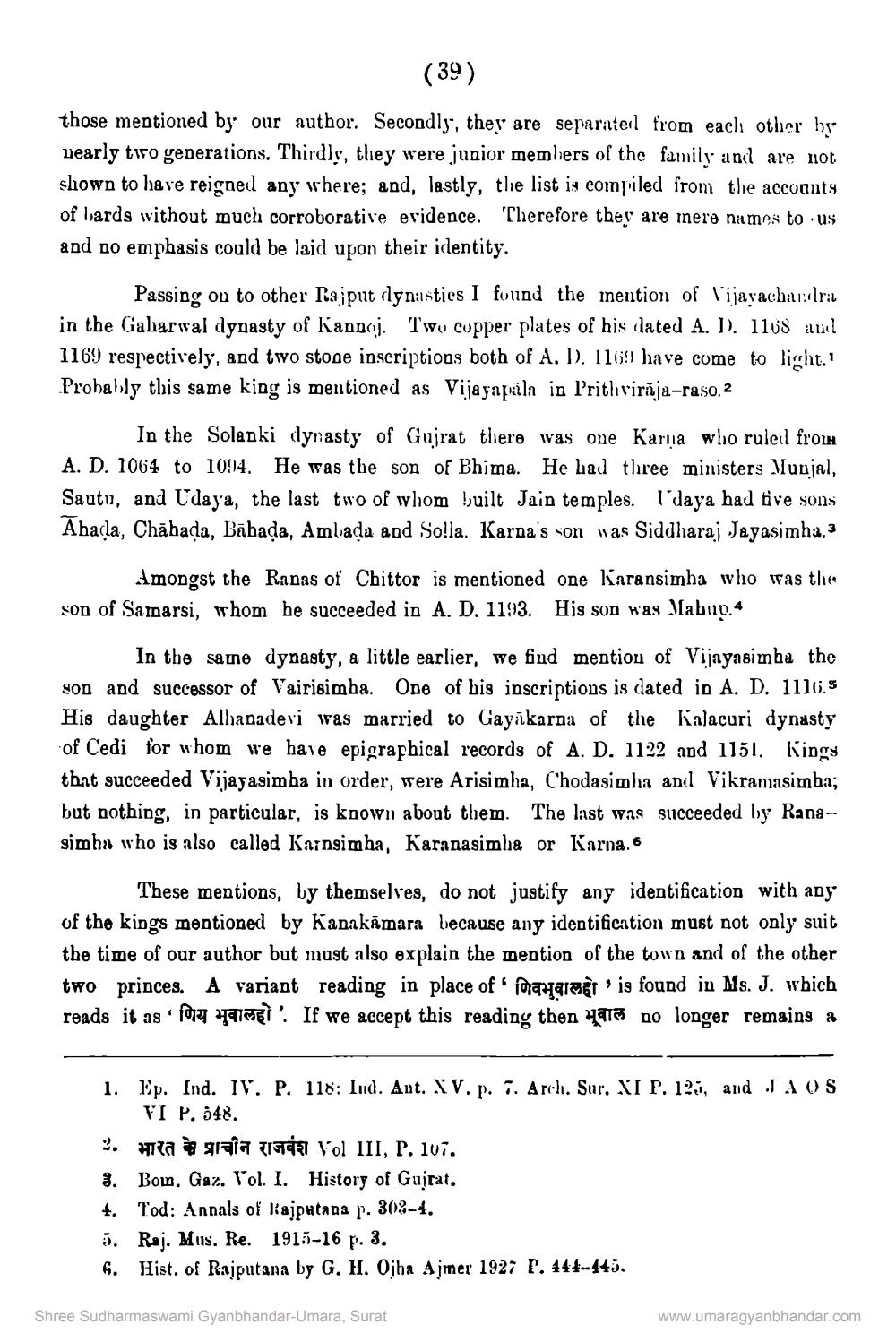________________
(39)
those mentioned by our author. Secondly, they are separated from each other by nearly two generations. Thirdly, they were junior members of the family and are not shown to have reigned any where; and, lastly, the list is compiled from the accounts of hards without much corroborative evidence. Therefore they are mere names to us and no emphasis could be laid upon their identity.
Passing on to other Rajput dynasties I found the mention of Vijayachandra in the Gaharwal dynasty of Kannoj. Two copper plates of his dated A. D. 1168 and 1169 respectively, and two stone inscriptions both of A. D. 1169 have come to light.1 Probably this same king is mentioned as Vijayapala in Prithviraja-raso. 2
In the Solanki dynasty of Gujrat there was one Karna who ruled from A. D. 1064 to 1094. He was the son of Bhima. He had three ministers Munjal, Sautu, and Udaya, the last two of whom built Jain temples. I'daya had five sons Ahada, Chahaḍa, Bihaḍa, Ambaḍa and Solla. Karna's son was Siddharaj Jayasimha.3
Amongst the Ranas of Chittor is mentioned one Karansimha who was the son of Samarsi, whom he succeeded in A. D. 1193. His son was Mahup.4
In the same dynasty, a little earlier, we find mention of Vijayasimha the son and successor of Vairisimha. One of his inscriptions is dated in A. D. 1116.5 His daughter Alhanadevi was married to Gayakarna of the Kalacuri dynasty of Cedi for whom we have epigraphical records of A. D. 1122 and 1151. Kings that succeeded Vijayasimha in order, were Arisimha, Chodasimha and Vikramasimha; but nothing, in particular, is known about them. The last was succeeded by Ranasimha who is also called Karnsimha, Karanasimha or Karna.6
These mentions, by themselves, do not justify any identification with any of the kings mentioned by Kanakamara because any identification must not only suit the time of our author but must also explain the mention of the town and of the other two princes. A variant reading in place of ayar is found in Ms. J. which reads it as. If we accept this reading then no longer remains a
6
1. Ep. Ind. IV. P. 118: Ind. Ant. XV. p. 7. Arch. Sur. XI P. 125, and JA OS VI P. 548.
2. भारत के प्राचीन राजवंश Vol III, P. 107.
3. Bom. Gaz. Vol. I. History of Gujrat.
4. Tod: Annals of Rajputana p. 303-4.
5. Raj. Mus. Re. 1915-16 p. 3.
G.
Hist. of Rajputana by G. H. Ojha Ajmer 1927 P. 444-445.
Shree Sudharmaswami Gyanbhandar-Umara, Surat
www.umaragyanbhandar.com




